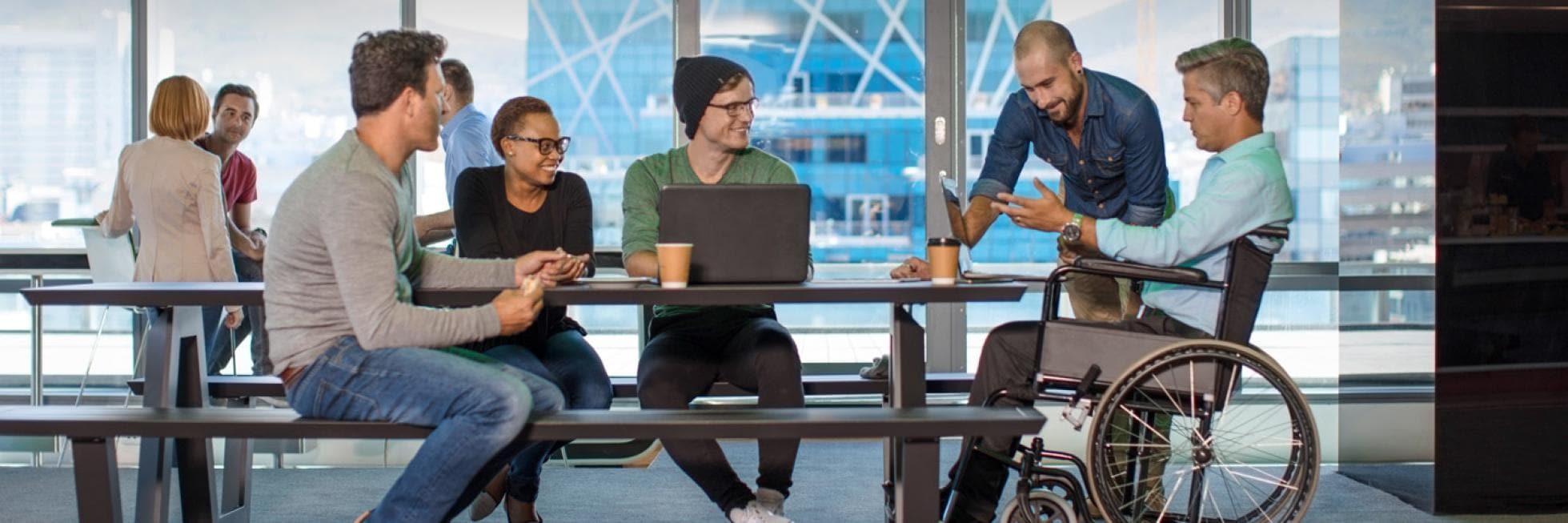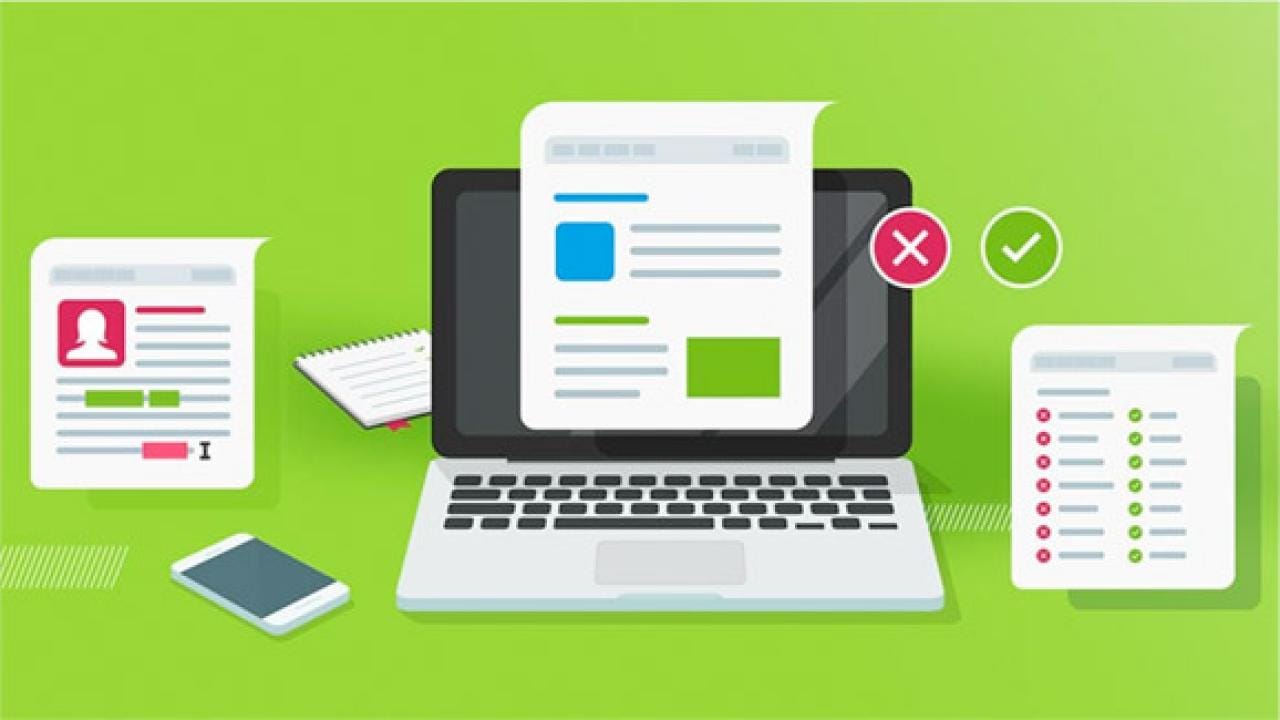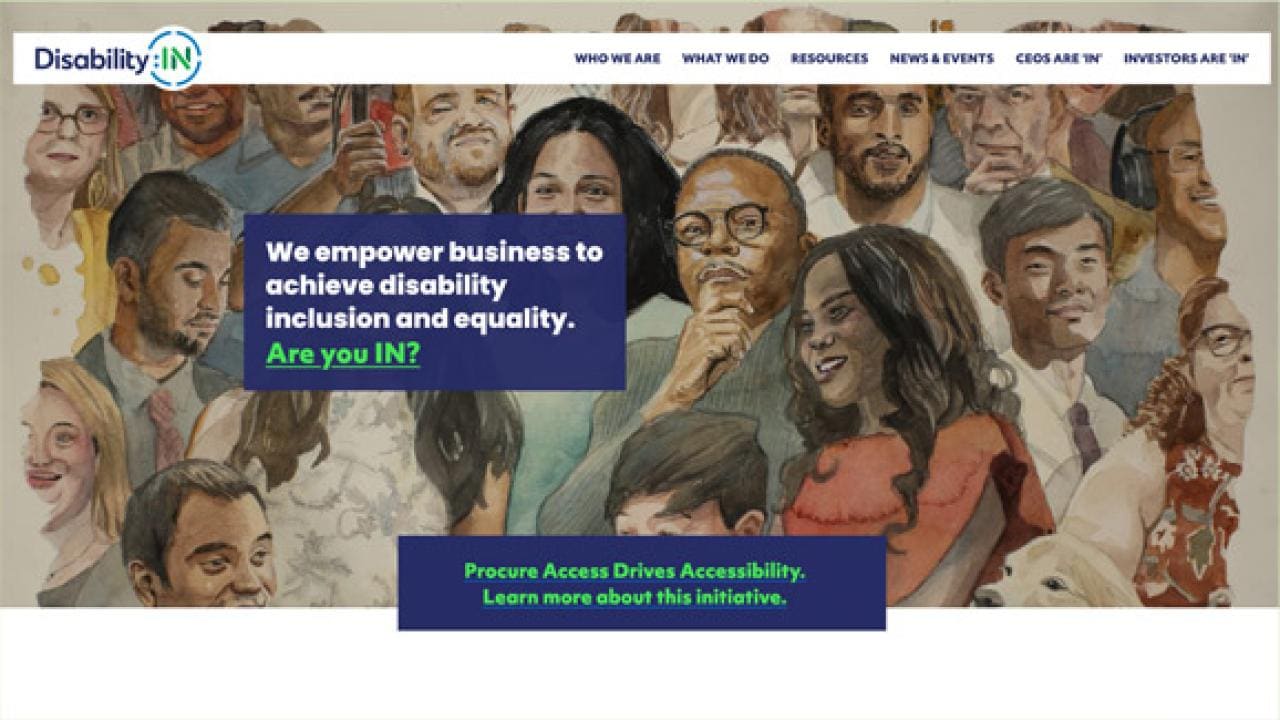Diverse Abilities

As a truly inclusive community, we support and empower people with a wide range of physical, mental and social attributes. People with different abilities and disabilities all deserve to work with equal opportunities and without barriers; and in the interactions they have, they deserve to be listened to, treated as an equal, and not defined purely by a single visible or non-visible factor.
There are two key elements to linguistic accessibility and respect for people with disabilities: word choice (what we say), and delivery method and structure (how we say it and put information across).
Respectful language and tone
The language we use, even informally, can show respect and create a welcoming atmosphere for people with different disabilities and attributes (including those that are not immediately visible). On the other hand, the wrong choice of language can have the opposite effect, even if done unthinkingly. That’s why, in the first instance, we choose words that reflect and include diverse ability levels, and that cannot be used to belittle people.
This often means using people-first language: recognizing that a disability does not totally define someone, and recognizing them as a person rather than associating them only with their disability or any other single characteristic. For example, try ‘people with disabilities’ instead of ‘the disabled’. However, if the person in question expresses that they prefer identity-first language (‘disabled person’), their choice should take precedent.
In the same spirit of recognition and empowerment, avoid language that turns someone into a victim (e.g. ‘lives with’, ‘is afflicted by’, is ‘wheelchair-bound’).
Remember: respectful language doesn’t only apply when a person with a disability is directly involved, it applies in all cases. Terms related to physical and mental disabilities, either specific (“I’m OCD about this”, “he’s acting bipolar”) or generic (“that’s crazy talk”, “this is insane”), can be offensive, inaccurate, and contribute to stigmatization.
Plain language is good for everyone
Wherever we can, we should write in plain language. This doesn’t necessarily, or exclusively, mean using short words. It means thinking about your intended audience and making your wording, structure, and design clear enough so they can always find and understand what they need.
Common elements of plain written language include:
Shortening sentences, using multiple sentences where necessary rather than long compound sentences and paragraphs (one thought per sentence is a good guiding principle).
Sticking to commonly used words – avoid scientific language wherever possible
Writing in a personal and engaging tone, resisting the urge to sound too formal
Not using a longer word where a shorter one will impart the same meaning (e.g., avoid ‘attempt’, ‘adjacent’, ‘purchase’, ‘whilst’; use ‘try’, ‘next to’, ‘buy’, ‘while’)
Using the active voice rather than the passive
Adding real-world examples to illustrate points accessibly
Using infographics and other visual elements to break up text and illustrate points
Plain language benefits everyone, regardless of their level of education of cognitive ability. And, ultimately, it benefits us. Getting our point across more succinctly and effectively means we can make progress and get aligned with customers and stakeholders sooner. And if it has the co-benefit of ensuring that everyone feels they are being considered and engaged on their level, that’s even better.
Accessibility in behavior: Colleagues with hearing impairments
Thinking about how we communicate inclusively and accessibly extends beyond written texts and into real-world interactions, too. From casual conversations to formal meetings and events, you can make choices that create equitable and barrier-free communication environments, particularly for colleagues with hearing impairments who may use lip reading or closed captioning. Consider in advance of a meeting or an event whether this is a topic you have to take care of. Here are some tips which may help.
DO:
Share important information before meetings or catch-ups, and document it in writing afterwards
Get in position: Face your colleague and stay near them in a well-lit space. Offer your colleague a central seat in meetings, if they find this useful
Put your camera on during virtual meetings – so your face and lips can be read
Minimize background noise and keep muted when not speaking during virtual calls
Get your technology to work: Speak close to your audio device, use a headset, ensure good internet connection
Use the spotlight function on Teams: Spotlight speakers who are talking for longer periods, enabling their faces to be seen more clearly
Allow closed captioning and consider recording the event with subtitles / transcript for later reference
Check understanding and repeat or paraphrase what you said if necessary
DON’T:
Approach your colleague from the side or behind
Cover your mouth when speaking
Make sudden changes in your language or way of speaking
Choose difficult locations, e.g. busy restaurants, dark rooms or windy outdoor settings
Talk over people in a group setting (take it in turns instead!)
If you have any further questions about this or any other section of Bayer Identity Net, please contact:

We share three tips for styling written text, using language, structure, format and even appearance to make your written work accessible to everyone.






